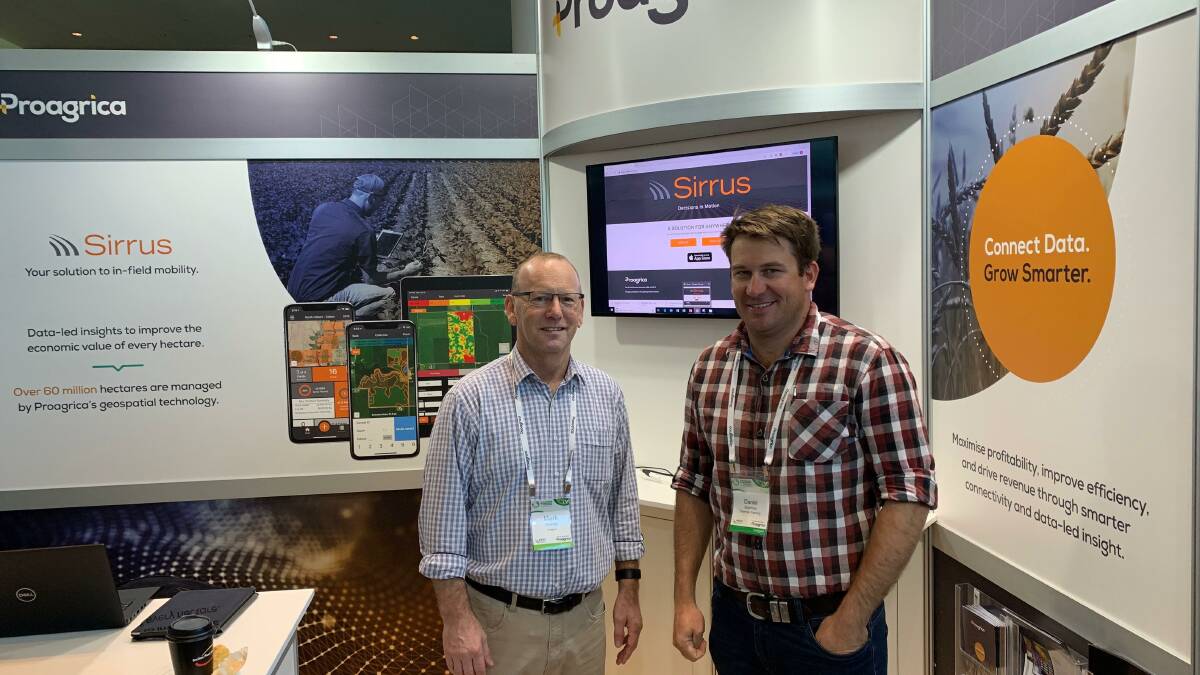
Lets face it, when it comes to agtech software most farmers and agronomists want a one-stop-shop, and rightfully so.
Subscribe now for unlimited access to all our agricultural news
across the nation
or signup to continue reading
With an overwhelming number of products on the market, but very little real information on actual performance or runs in the paddock, investing in a new tool or platform is perceived as a risky proposition.
However news that agtech start-up Flurosat has partnered with Proagrica to deliver its range of tools through the grand-daddy of precision agriculture platforms, Sirrus, signals the agtech industry might be finally maturing, recognising collaboration is a more viable pathway forward.
Proagrica business development manager for Australia Mark Pawsey said the industry was moving towards scale, with small up and coming tools partnering with larger established companies, this not only gave the start-ups access to a larger client base, it gave the farmers and their advisers certainty that they could engage with a new product as part of their existing platform, removing the risk the start-up may not survive in long term or have the technical support in place.
"It allows our joint customers to collaborate around a single farm management system while using a range of different tools," he said.
"We're pleased to be partnering with FluroSat and through their analytics platform, provide our users with the benefits of a connected ecosystem to make management and production decisions at a more precise level using an integrated suite of tools".
Mr Pawsey said the collaboration was possible because of the AgX platform, a standardised data infrastructure that evolved from the company's original precision agriculture software Sirrus, and now served to underpin its whole of enterprise solution.
"AgX is the infrastructure that allows users to collect and manage data spatially," he said.
"This means a whole of enterprise solution can be developed and held in one place, rather than having your precision agriculture data in one database and your farm records in another, it's about putting it all together.
"If you are going to bring data together you need standardisation, which is where AgX comes in, it allows seamless integration of data, on the fly."
Mr Pawsey said beyond convenience there were a number of technical reasons why data stored non-spatially, such as most standard farm record keeping software, would be of limited value in the future.
"Agriculture is inherently spatial, you plant a seed at one point on the planet, that point may have a different set of characteristics to one planted ten metres away, and you need to manage actions around that one seed, that one plant," he said.
"Agriculture is heading in one direction, and that is further automation and more data, anything coming off a machine or a sensor will have some type of geo-spatial reference and farm management systems need to be able to deal with that."
Mr Pawsey said the spatial framework, along with an existing agricultural experience and clients, made Proagrica an obvious and attractive choice for new technologies to partner with.
"Flurosat is an example of emerging technologies which are inherently spatial," he said.
"They are using imagery and decision support methods which naturally align with spatial solutions."


